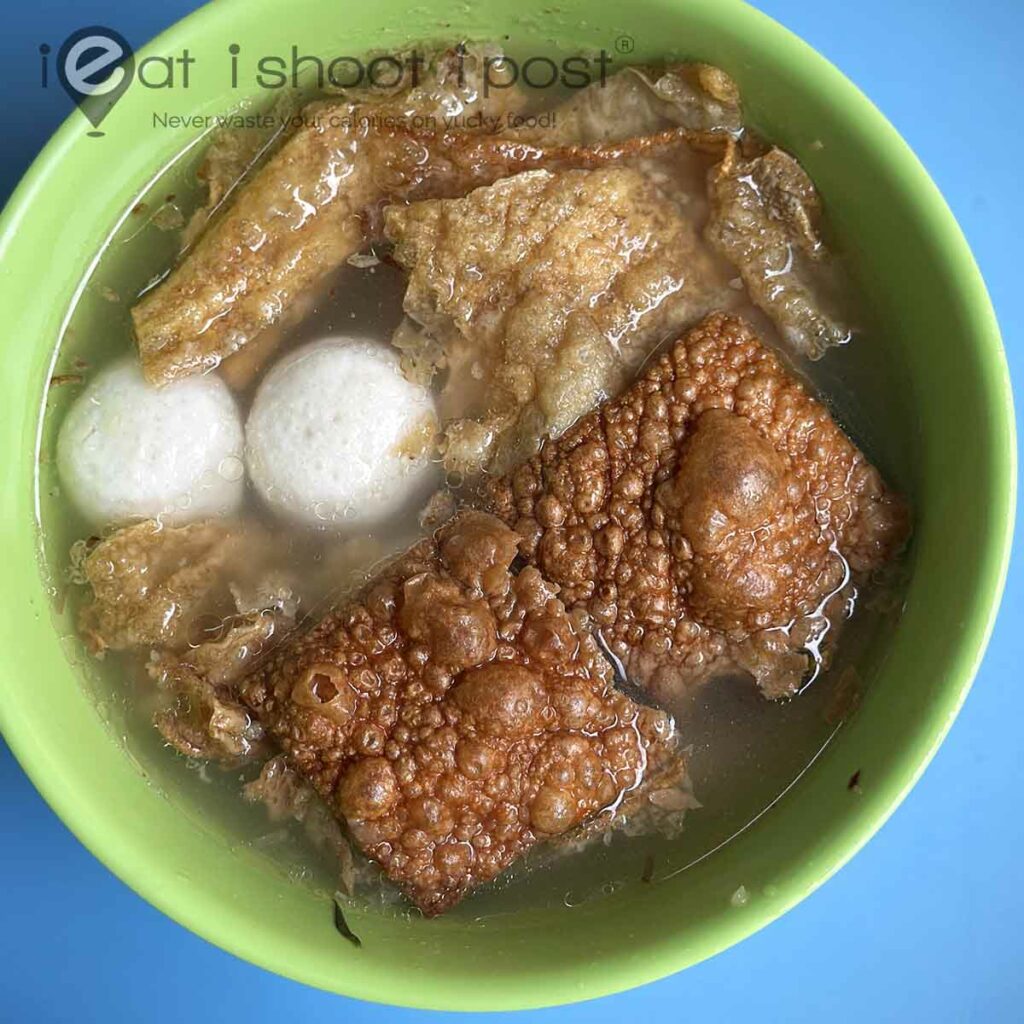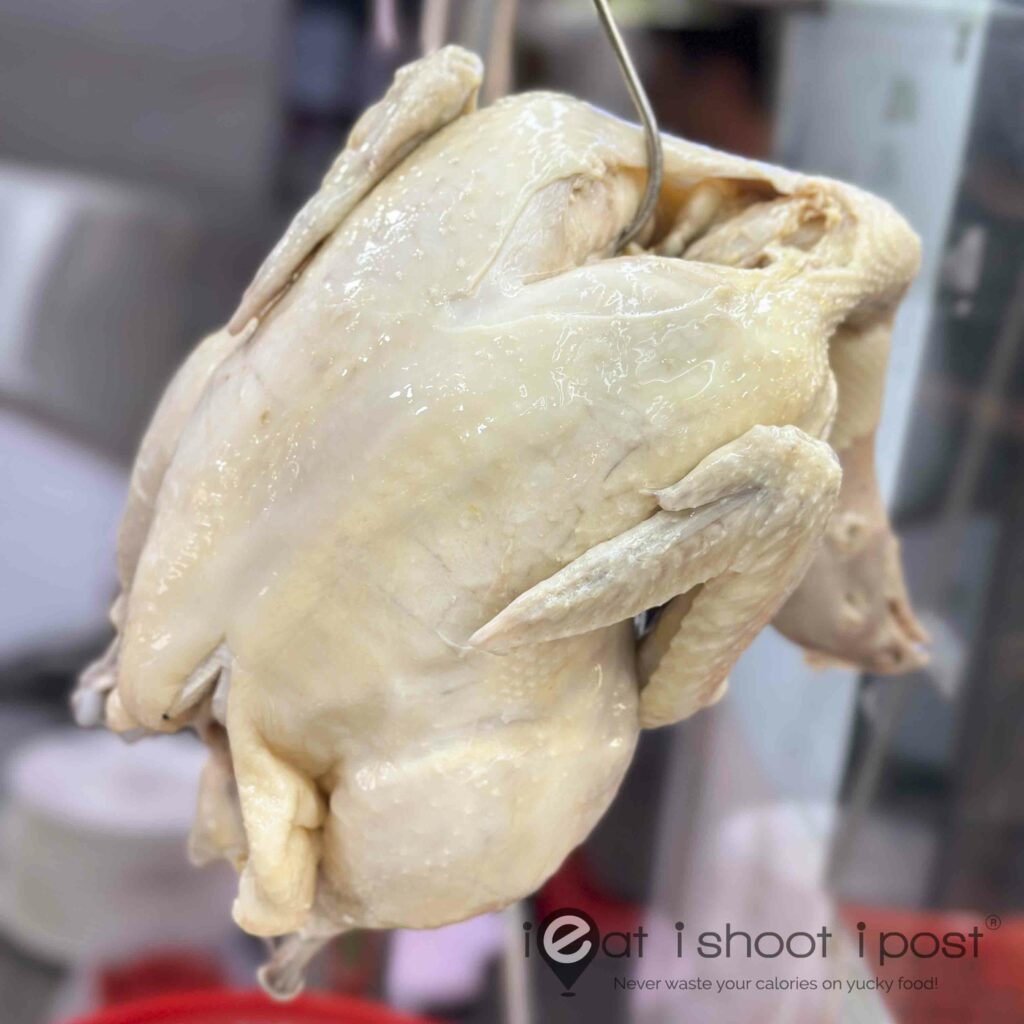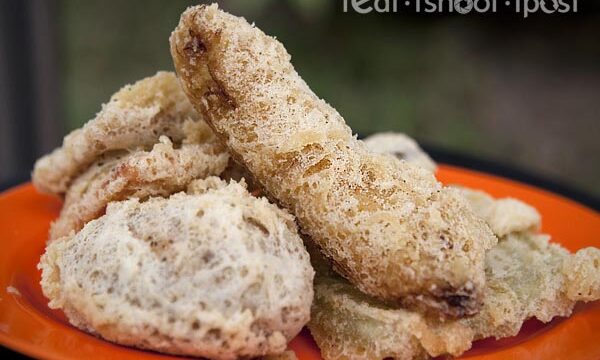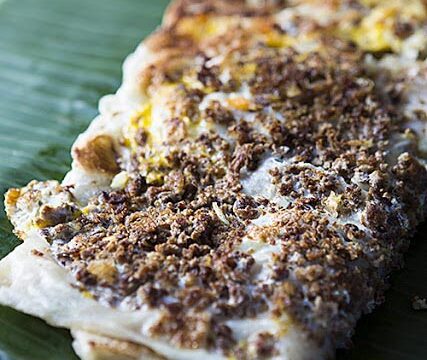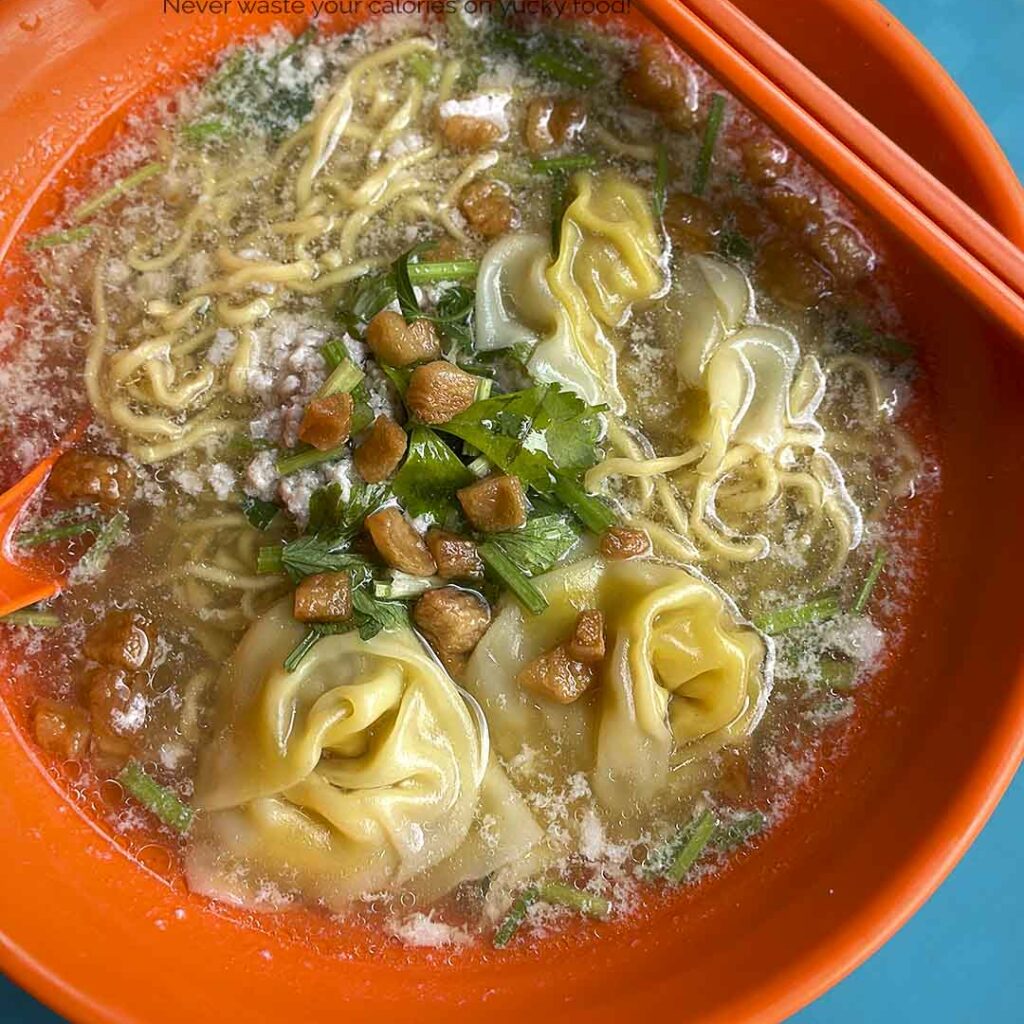 I want to first thank everyone for contributing your views on our facebook page. When I met Mr Baey at Tampines Round Market, I shared your views with him together with some of my own thoughts. As you can see from his parliamentary speech (extract below), some of the things that you have said have been brought up in parliament.
I want to first thank everyone for contributing your views on our facebook page. When I met Mr Baey at Tampines Round Market, I shared your views with him together with some of my own thoughts. As you can see from his parliamentary speech (extract below), some of the things that you have said have been brought up in parliament.
I think that we are all very concerned about preserving our Singaporean cultural identity. Singapore food is a big part of our culture and sadly, as many of you foodies out there realize, it is deteriorating in quality. Ironically, the fine dining and gourmet sector of our culinary landscape has been developing at an astronomical rate. The development of our gourmet sector is of course a wonderful thing for us, but the quality of our hawker food also needs to keep up with our pace of development.
There are many things that I feel needs to happen in order to preserve and protect our Singaporean Hawker Heritage. Mr Baey has already highlighted a few of these things. I want to reiterate on his points because, well, its all pent up inside and I need to get it out.
1. In his speech, he recognized the need for our kids to be taught about our own food culture. He called for our kids to be taught how to make huat kueh along with their muffins. To add on to that, I think there is also an urgent need for them to learn a bit about the history of Bak Kut Teh, Chilli Crabs, Fish Head Curry, and the story of the The Four Heavenly Kings and how Yu Sheng was invented. All these things are part of our cultural heritage and define us as Singaporeans. If we don’t teach them to our kids, our Singaporean identity and culture will continue to be diluted with influences from other countries. It is a crying shame when you hear kids saying “Oishii” and “Itadakimasu” when they eat and not “Pa Pa chia (eat), Ma Ma chia” and “Shiok!”
2. Mr Baey has highlighted the need for various government agencies, especially AVA and NEA to recognize the importance of our Heritage Hawkers. Food safety and hygiene is of course of utmost importance, but there must be a special considerations for crafts which are deemed to have heritage value. Mr Baey has already cited the example of the Coffee Powder Factory. I want to give you two more examples:
I went to Song Kee Fishball noodles last week to eat my favourite fish dumplings. (Her Giao) This is a fast disappearing Teochew dish in Singapore because it is not easy to make. To my dismay, they don’t make it anymore. The reason they cited is the regulations imposed by the authorities restricting them making these at home. One thing they brought up is that the authorities have told them that they cannot keep the spring onions in their home fridge anymore. They can’t have a fridge in their stall because it is too small as it already houses their fish ball making machinery. I am hoping that when NEA build their new hawker centres that they realize that some hawkers need ample space in order to make certain dishes and that there cannot be a one size fits all kind of arrangement. If there can be BTO flats, why can’t there be BTO hawker stalls?
I am also hoping that that there is some way of granting “Heritage Status” to some of these traditional crafts just like how we grant Heritage Status to certain buildings. Until the relevant authorities can recognize that making Her Giao by hand is a heritage skill and grant them special dispensation, I am afraid most of our hawkers will have to take the alternate route and just buy them from a certified factory. The end of Her Giao is nigh.
Here is another example. Singapore’s last standing Muah Chee man is still having trouble procuring a place to sell his hand crafted Muah Chee. He is unfortunate in the sense that his father never wanted him to continue the family tradition, so they never took up a hawker stall when they were chased off the streets. As a result, he has been hopping from coffeeshop to coffeeshop. Whenever business gets better, the boss of the coffeeshop will increase his rent and he has to move. I have tried calling on NEA to help him get a hawker stall and are told that there is a set procedure and he has to bid for the stall like everyone else. For him to survive, he really needs a stall in a busy hawker centre at very low rental since his stuff can only sell for $2. Wouldn’t it be great if the officers can just recognize his status as a Heritage Hawker and help him get a stall at pioneer hawker prices? How come we can manage to get Joel Robuchon to open a restaurant here in Singapore and we cannot even save the last remaining Muah Chee man who represented Singapore at Singapore Day in London?
Since we are on this topic, I have been told by friends of mine who have tried to open a Chinese restaurant selling heritage Chinese food. They ran into a huge roadblock in trying to get some of the best chefs from China here because they just don’t have the right papers. So, now we have a situation where the best western chefs are welcomed with open arms. We part the Red Sea for them to come to Singapore while the Red Sea fills up again when we try to do the same for the foods of our own forefathers. Why? Because they don’t have the right papers!
The next generation of Singaporeans are going to be only good at making Spaghetti and not know how to fry a decent plate of Char Kway Teow, my friends.
3. I think Mr Baey’s idea of a Museum for our Heritage Foods is a great idea. I am just worried that at the rate we are going, the Museum is only going to be a reminder of what we had in the past. Our kids are going to ask us “Hey dad, this Her Giao looks delicious! What does it taste like?” As Mr Baey has said, we need to teach the next generation of Singaporeans, whether they are born here or naturalized, the history of our Heritage foods. But isn’t having a zoo of live dinosaurs better than having a museum full of skeletons? We really do need to help those hawkers striving to keep their craft alive to thrive in our evolving society.
4. His last point about high rentals is also something that is echoed by many of our readers. This is a clear and present danger to the preservation of our hawker tradition. Rentals are killing the artisanal hawkers because they are forced to open longer and longer hours in order to make ends meet. If you want to eat Char Kway Teow that is fried by a master, you can’t expect him to fry for more than 8 to 10 hours. He should be able to open his shop for 8 hours a day and be able to have enough to pay the mortage and send his kids to school or daycare. When rentals go up, he is forced to open longer hours or hire another person to fry the Kway Teow. When that happens, you are not going to get good Char Kway Teow. We like to talk about work-life balance and so on. But most of the time, we talk about it in relation to our own needs. How about work-life balance for our hawkers? We talk about the income disparity about the rich and the poor in this country but in the same breath we complain when the hawker increases the price of their dish from $3 to $3.50.

I was eating at Redhill Market last weekend and I chanced upon a little girl running round. I love little children and I see lots of them in my clinic. But this one was one of those extra cute ones which just makes you want to pick her up and squeeeeeeeze her. I found out that she belonged to a couple who were running a hawker stall selling fruit juice. When I was living in Bangkok, I had always seen little children or even babies lying in a basket next to their parent’s roadside hawker stall. This is a common sight in Bangkok, but I was surprised to see this here in Singapore. The mom later told me that they had two kids and one was already in day care and they couldn’t afford to send the younger one to day care. Putting her in her little baby chair at the hawker stall and having some of their friends to come and help keep an eye on her was the only way they can manage to keep the fruit juice stall running. Are we really a developed country yet?
Aside from just keeping rentals low, there is the other side of the equation. How are we going to entice young hawkers to take up the profession if they can’t make enough to send their kids to day care? This part of the equation lies squarely on us Singaporean foodies. Are we wise enough to be able to discern the true value of our hawker food? Why do we have this culinary prejudice that is willing to pay $20 for a pasta carbonara but complain when the price of a plate of Hokkien Mee increases from $3 to $3.50? I say this with utmost concern for those less fortunate in our community who survive on that plate of $2 chicken rice, especially for the elderly folks in the older estates. We do need the $2 chicken rice, but those of us who are willing to pay $15 for a bowl of ramen should be able to be more discerning and not be too quick to complain about a 50 cent increase in a bowl of Bak Chor Mee soup. Unless we can learn to value and reward hawkers who are putting in the effort to make a better plate of Hokkien Mee, we are going to end up with a Hawker Centre selling only Italian pasta instead of Hokkien Mee, Gelato instead of Bean Curd, Tempura instead of Goreng Pisang and Ramen instead of Bak Chor Mee.
There is of course a lot that our government can do to help preserve our Hawker Heritage. But as you and I know, the parliamentary process is going to take time. It needs to be tabled, then discussed and then the Minister needs to make a decision, then form a committee to write a paper, convene a few more meetings, write some more papers and so on and so forth. I am hoping that Mr Baey’s speech has been heard by the relevant authorities and that somehow, something is starting to happen in the various Ministries.
Until then, it really is up to us concerned foodies to do our part to support our hardworking hawkers and to show them that we value their craft and encourage them to continue to provide quality food done the traditional way. The solution starts with you and me as concerned foodies and may be as simple as up-sizing your next bowl of Mee Pok Tar at your favourite hawker stall by a $1 and thanking them for taking the effort to fry their own chilli to make that great bowl of Mee Pok Tar! A journey of a thousand miles starts with one small step. I hope you will join me in taking the next one.
Extract from Mr Baey Yam Keng’s Budget Debate speech, 5 Mar 2013
While we all want Singapore to continue to do well economically, we cannot neglect the bedrock of our economy, our sense of belonging that binds us as a people who are passionate about making Singapore our home and doing our best for the country.
Local food and its culture are part of our national identity and provide shared memories and experiences across generations. We must be proactive in preserving, protecting and promoting our local food culture. As part of my research, I recently met up with Dr Leslie Tay of ieat ishoot ipost. He is a popular food blogger and also a medical doctor. He sees patients in the morning and at night, and in the afternoon, he goes around hunting down good hawker food and shares his insights and findings. His passion gets him going and makes his life more enjoyable and fuller. Likewise, as a country, while our Budget allocates financial resources to keep our economy going, we must not ignore the intangible things that keep us together.
Using our local food as an example, they are not just perishables to keep our stomach full, to titillate our taste buds, to satisfy our cravings, or just the job of NEA to build 10 new hawker centres, although that is a much welcomed change in policy. According due attention to our national identity has to be a whole-of-government effort.
First, we should teach our student to use more local cooking equipment and learn more local food during Home Economics classes. Why learn only how to use the frying pan when we can also learn how to use the wok? Why only bake muffins when we can also make huat kueh? Why only bake carrot cake when we can also fry carrot cake? Second, NEA and AVA may want to balance the importance of preserving local food culture even as they ensure food hygiene. For example, there are not many coffee roasting places left. One of the owners was asked recently by AVA to cool their coffee beans on metal trays rather than on the floor which they had done so for more than 50 years. Hygiene cannot be compromised, but why not ensure cleanliness of the floor rather than going by the book that assumes trays will be cleaner. This requirement reduced the coffee throughput, increased production time, reduced productivity, and potentially puts their business at risk.
Third, in addition to National Heritage Board’s work of putting artefacts in museums, and Preservation of Monuments Board marking the Civilian War Memorial as a national monument, we could look at recognizing living traditions and cultures such as local food stalls which have heritage value. Some stalls have been around for generations, and together we should find ways to allow them to continue cooking in traditional ways and help them to carry on their trade.
我们即将庆祝新加坡第50个国庆日,本地小贩美食陪伴国人走了50年,也是新加坡本土文化的重要部分。我们应该找出那些拥有50年老字号、食物美味的小贩摊主,封他们为国家文物美食。趁这些老师傅还健在时,标新局可以帮他们保留传统烹饪方式,让他们延长生意。政府在控制外劳时呼吁餐饮业者,他们的生产力必须增长,这个用意可以理解,但问题是能够成功转型的可能就是那些集团式的企业,这些小贩摊主只聘请一个或两个工人, 所以希望人力部可以给予他们更大的伸缩性。另一方面,老师傅愿意传授秘诀的话,我们也可以和新传媒合作,通过电视真人秀节目找个肯刻骨耐劳、虚心向他们学习的徒弟,这个的后起之秀赢取的不只是一门厨艺,还可以包括环境局提供的一年免租金的小贩摊位。
We must create and preserve more shared common spaces that are affordable to all Singaporeans. The decision to allow social enterprises to run our hawker centres help ensure that Singaporeans, rich and poor, are able to enjoy local food at affordable prices at the same places. Our hawker centre stalls rents must be kept affordable and not be completely subjected to market forces.



